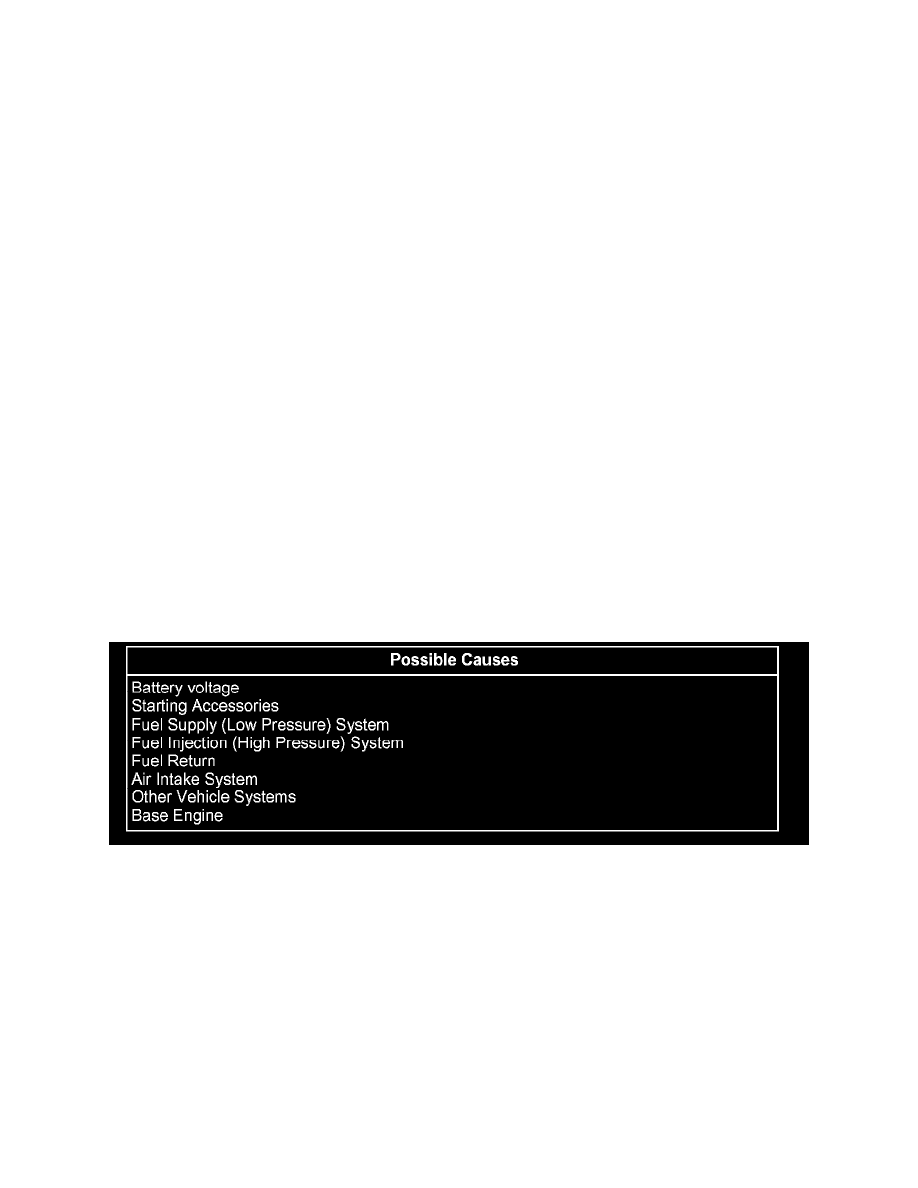RAM 3500 Truck 2WD L6-5.9L DSL Turbo VIN C (2003)

10.
Verify proper low pressure fuel supply to the high pressure pump: Perform the appropriate fuel supply system flow test. NOTE: This procedure
can be slightly different depending on if the vehicle has an engine-mounted transfer pump or the in-tank transfer pump. In a good low pressure fuel
system, fuel flow of 560 mL in 10 seconds or better is expected for model year 2003 and early 2004 vehicles. In a good low pressure fuel system,
fuel flow of 590 mL in 10 seconds or better is expected for late model year 2004 through 2007 vehicles. Be sure there is no air in the system.
Is the low pressure fuel supply volume sufficient?
a.
Yes >> Go to Step # 11.
b.
No >> Repair the low pressure fuel supply system as necessary. Vehicles equipped with an in tank fuel pump: Refer to the detailed
diagnostic information available in TechCONNECT under: Service Info tab > 9 - Engine > Diagnosis & Testing > In-Tank Fuel Lift Pump
Flow/Diagnostic Test Procedure. Vehicles equipped with an engine mounted fuel transfer pump: Refer to the detailed diagnostic information
available in TechCONNECT under: Service Info tab > Diagnostics tab, Powertrain Gas, Driveability Diesel, Fuel Lift Pump Flow And Inlet
Restriction Test >> Go to Step # 15.
11.
Fuel Return: Check for kinked or restricted fuel return lines. Check the fuel tank venting. Does a fuel return system restrictions exist?
a.
Yes >> Repair as necessary. Go to Step # 15.
b.
No >> go to Step # 12.
12.
Intake / Exhaust Systems: Check for inlet restriction, inspect air filter for excessive dirt/debris. Verify air intake tubes and hoses are not kinked or
restricted. Check for charge air cooler air system leaks. Perform "INTAKE AIR SYSTEM PRESSURE TEST - DIESEL". Refer to the detailed
service information available in TechCONNECT under: Service Info tab > 11 - Exhaust System > Turbocharger System > Turbocharger >
Inspection. Inspect Turbocharger for excessive compressor wheel movement and proper waste gate operation. Check for exhaust restriction. Check
for kinked or blocked exhaust pipes. Verify proper exhaust brake operation (if equipped). Were any issues found with the Intake/Exhaust Systems?
a.
Yes >> Repair as necessary - Go to Step # 15.
b.
No >> Go to Step # 13.
13.
Other Vehicle Systems: Verify proper operation of the Transmission Clutch. Verify proper operation of the Transmission. Verify proper operation
of the Vehicle brakes (check for dragging). Verify proper operation of the Cooling fan operation cycle time. Verify proper operation of the Engine
driven accessories. Were any issues found with the Vehicle System?
a.
Yes >> Repair as necessary. Go to Step # 15.
b.
No >> Go to Step # 14.
14.
Base Engine: Check for internal engine damage. Valve lash settings, engine compression, cylinder leak down, etc. Were any issues found with the
Base Engine?
a.
Yes >> Repair as necessary. Go to Step # 15.
b.
No >> Go to Step # 15.
15.
Repair Complete: Perform Powertrain Verification Test VER - 1 (Diesel). Refer to the detailed service information available in TechCONNECT
under: Service Info tab > 8 - Electrical/Electronic Control Modules/Engine Control Module > Diagnosis And Testing.
Section C - Engine Noise
Perform the Pre-Diagnostic Troubleshooting Procedure before proceeding.
